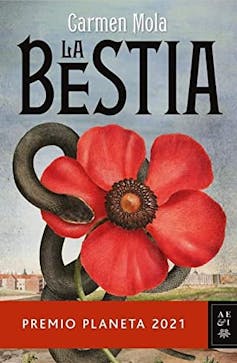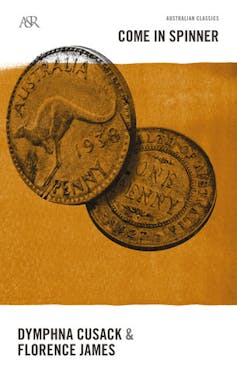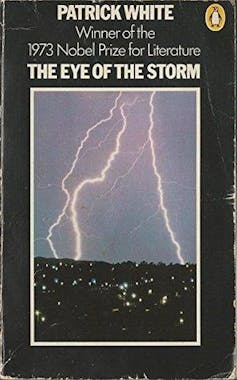Source: The Conversation (Au and NZ) – By Camilla Nelson, Associate Professor in Media, University of Notre Dame Australia

Literary hoaxes thrive on exposure. At best, they are politically transgressive. They strip away anything smug, pretentious or hypocritical to reveal an uglier reality underneath.
Hoaxes may use ethically questionable methods. But when they work, they tell us something about the relationship of art to life and politics. It’s the literary equivalent of Banksy shredding an artwork at Sotheby’s as the hammer came down.
If they don’t, then we should question if they deserve to be called a hoax at all.

Recently, hoaxes were in the headlines when three men leapt onto a Barcelona stage to accept a million euro literary prize awarded by the publishing house, Planeta – “unmasking” themselves as the Spanish writer, Carmen Mola in the process. “Mola”, a bestselling crime author, won the Euro prize for La Bestia – The Beast – a thriller about a serial killer stalking Madrid in the midst of a cholera epidemic.
Cue global shock, followed by shrugs from authors, publishers and critics. So far, the fury has centred on who is allowed to write what, and why. However author Margaret Atwood crisply and correctly called the unveiling a “a great publicity stunt”. This hoax was embarrassing and high profile. But it was also unoriginal and apolitical.
The men behind Mola said they were tired of lying. But might claiming a lucrative, prestigious prize – and a bit of ego – also have been a factor in unmasking themselves?

Jordan Strauss/AP
Pen name politics
The Mola hoax infuriated many because the authors, who wrote a trilogy of ultra-violent novels starring a female detective, Inspector Elena Blanco, had generated a backstory that was more than a pseudonym. It was an identity. It was also stereotypically gendered.
Mola, which roughly translates as “Carmen the cool” in English, claimed she was an academic who kept her writing career a secret because she was bashful about the allegedly transgressive subject matter.
“I didn’t want my colleagues at the office, my sisters-in-law or my mother to know that I wrote a book where someone kills a woman by getting larva worms into her skull,” Mola said in an emailed interview. Email and claims of reclusiveness are the modus operandi for managing publicity arrangements for a problematic identity.
Lawyer and former director of the Women’s Institute in Spain, Beatriz Gimeno, tweeted that the authors had propagated the persona of a woman through email interviews for years, for financial gain. Another commenter called it gender bending “catfishing”.
According to Spanish journalist, Maria Ramirez, a Madrid feminist bookstore is now refusing to sell the Mola books on principle that “men don’t take all the space”. Historically female authors have been forced to use male pseudonyms to be published to fight for this space.
Read more:
Reclaim Her Name: why we should free Australia’s female novelists from their male pseudonyms
Did the authors see themselves as taking a poke at the history of women’s writing or gender oppression? No. They reportedly said they chose the name by chance and for fun and there was no politics associated with their choice of a woman. “Choosing a woman’s name was not a thought out thing, we don’t want to send any message. We could have put R2-D2 on it,” they said.

In Australia, in the 1940s, Dymphna Cusack and Florence James used the male pseudonym, Sydney Wyborne, to win a newspaper competition for an unpublished manuscript. They make an interesting comparison to the Mola case. Sadly, once unmasked, the prize was withdrawn. They didn’t get the money or the publishing contract.
Their book wasn’t published until 1951, under the new name Come in Spinner, by another publisher. According to Cusack, the delay was complicated by obscenity laws at the time, and editors’ resistance to publishing the women under their two real names.
Asking questions
A true hoax provokes. It questions cultural biases, shatters conventions, leaving fragments for discussion that linger for years, if not centuries.
Daniel Defoe’s Robinson Crusoe, for instance, is widely credited as the first realist English novel but it was initially read as a “true history” when published in 1719, under Crusoe’s name. The first novel, or one of the first fake memoir hoaxes? This is a conversation that continues.

Fast forward to 2006, when the Australian newspaper launched a “sting” on Australian publishers. The article was titled, “Would a manuscript from the 1973 Nobel laureate pass muster today?” A chapter of Patrick White’s Nobel prize winning novel, The Eye of the Storm, was sent to publishers under a pen name that was an anagram of Patrick White: Wraith Picket. The idea was copied from a similar sting by The Times of London, using writing by V.S. Naipaul.
Furious publishers who rejected White’s manuscript said they were not given enough of the book to make a decision and it was sloppily presented. This simple hoax was in the tradition of the fictional Australian poet from the 1940s Ern Malley. It made a cultural point – much of the book world is driven by rank commercialism and passing fads. An editorial eye is hit and miss.
Less salubrious – and more obvious – are the cultural commentary hoaxes on the saleability of sex romps, from a 1970s satire of the writing of Harold Robbins to a more recent parody of the writing style of 50 Shades of Grey.
Intercultural thefts are a separate matter. They aren’t hoaxes. They are harmful appropriations. Most commonly, such theft is committed by a dominant culture and the victim is the literary heritage of an oppressed minority.
This sorry history includes the so called “Virago Vicar”; an Anglican vicar named Toby Forward who published a collection of stories with the British feminist publishing house Virago under the pseudonym Rahila Khan.
Identity theft involving non-fiction forms or memoir is beyond this category – it belongs in the realm of fake news and “alternative facts”.
One interesting theft that keeps everybody talking – and may well endure – is the case of writer “Jeremiah Terminator Leroy”; a New York based television writer named Laura Albert who adopted the persona of a queer male sex worker from West Virginia, whose novels gave rise to a cult following. Albert convinced her sister-in-law Savannah Knoop to play the part of the reclusive author at book and other celebrity events.
The Mola men’s best defence might be that collaborations are rarely rewarded in the publishing world and they aimed to explode that status quo. But they have made little of this, other than mentioning how they “combined their talents” to write their crime trilogy along with this new novel.
Planeta, meanwhile, are expected to honour both the publishing deal for La Bestia and the lucrative associated TV adaptation of the Blanco trilogy under the Carmen Mola name. Filming starts in January.
![]()
The authors do not work for, consult, own shares in or receive funding from any company or organization that would benefit from this article, and have disclosed no relevant affiliations beyond their academic appointment.
– ref. What makes a good literary hoax? A political point, for starters – https://theconversation.com/what-makes-a-good-literary-hoax-a-political-point-for-starters-170538








